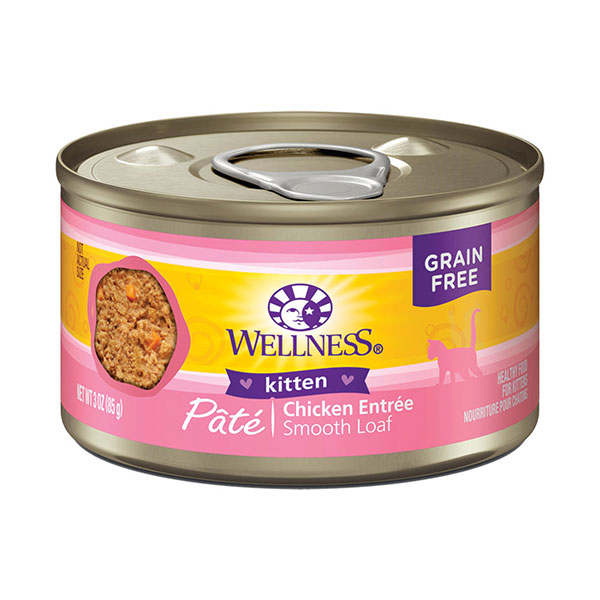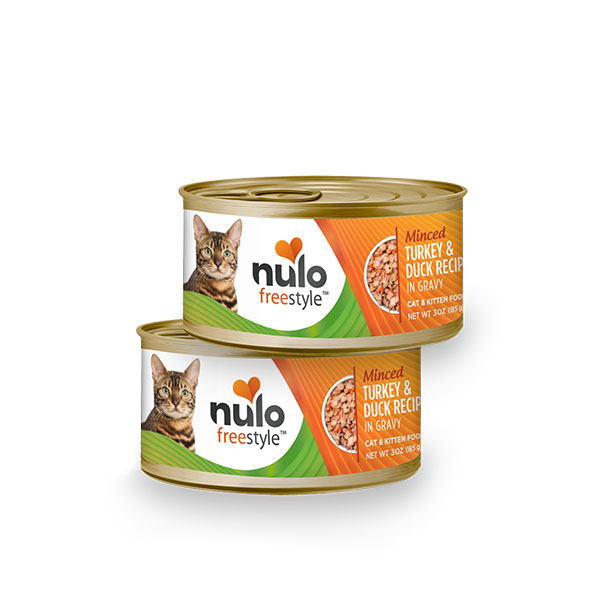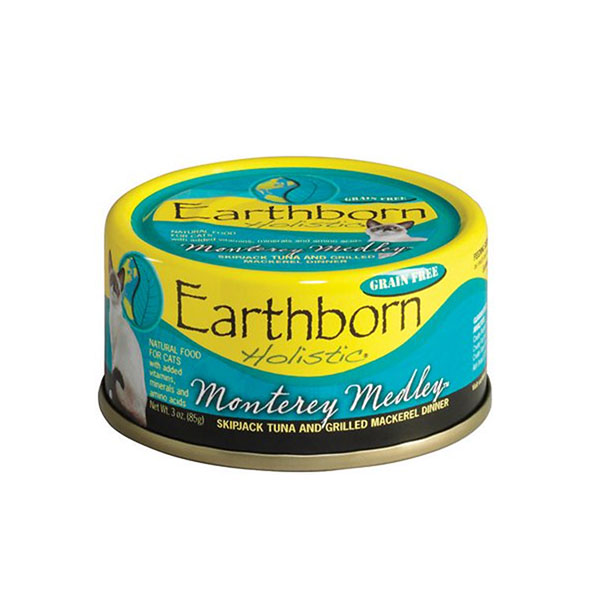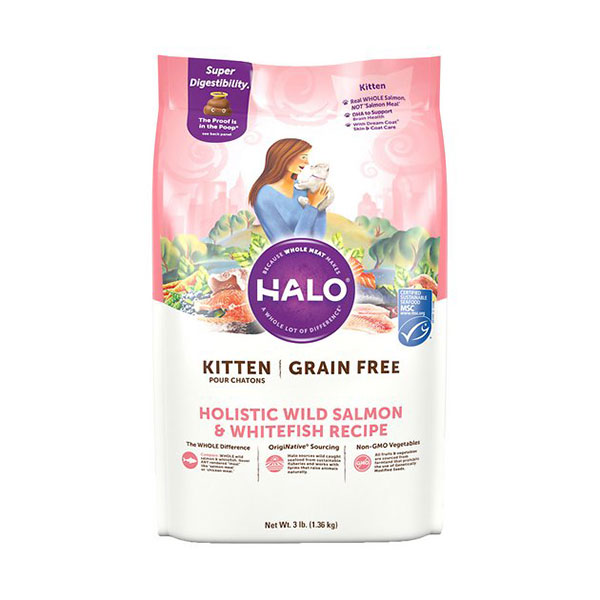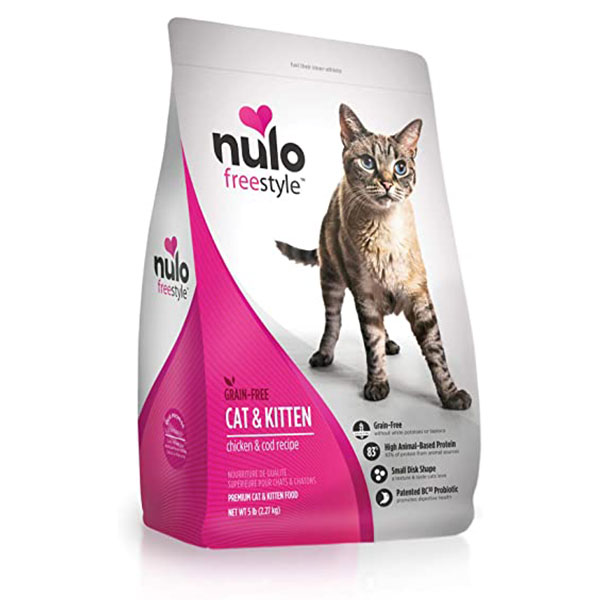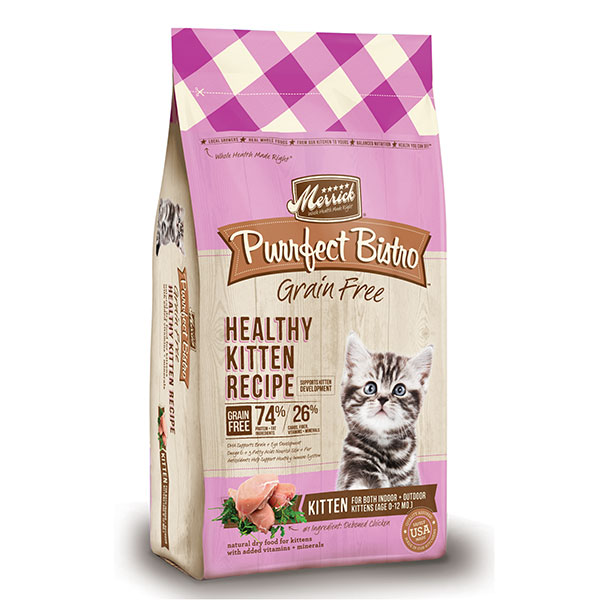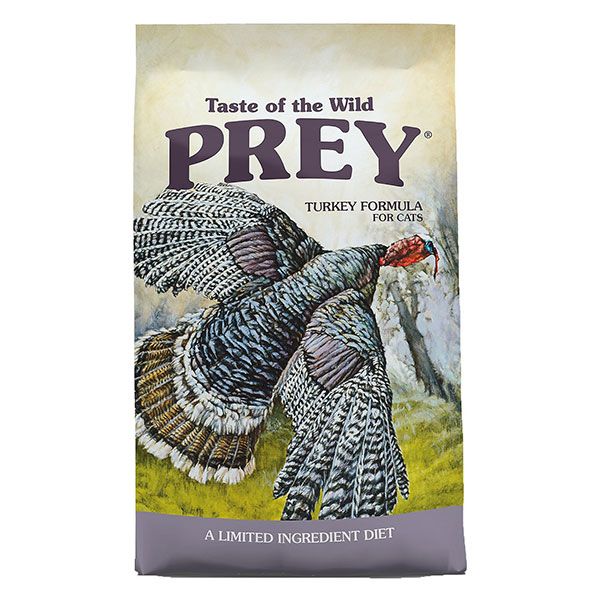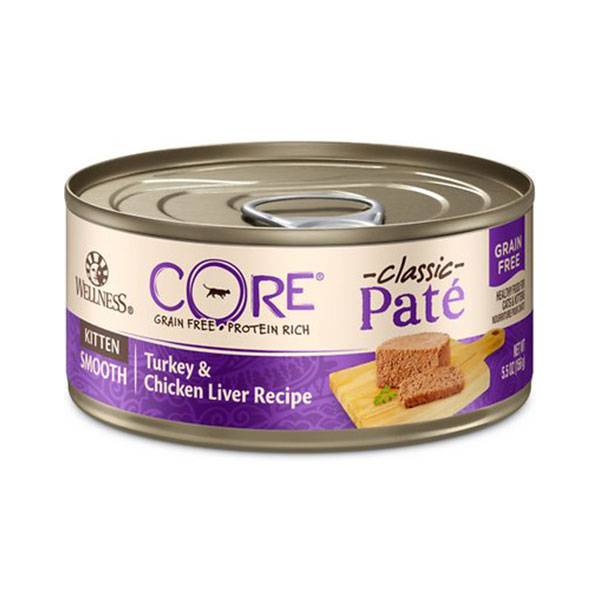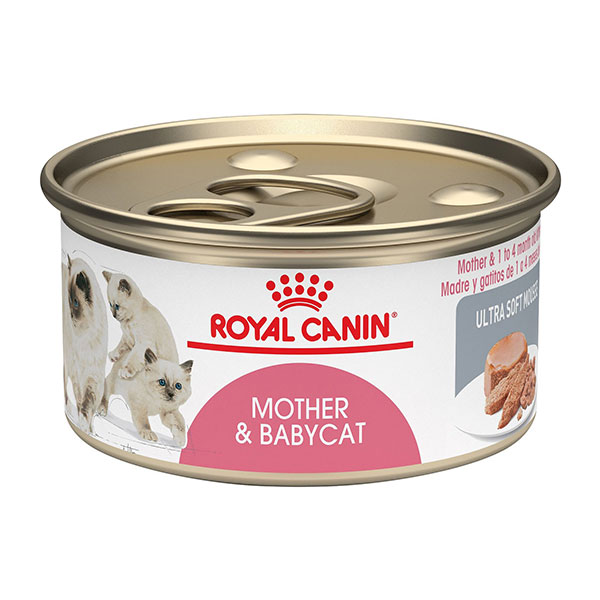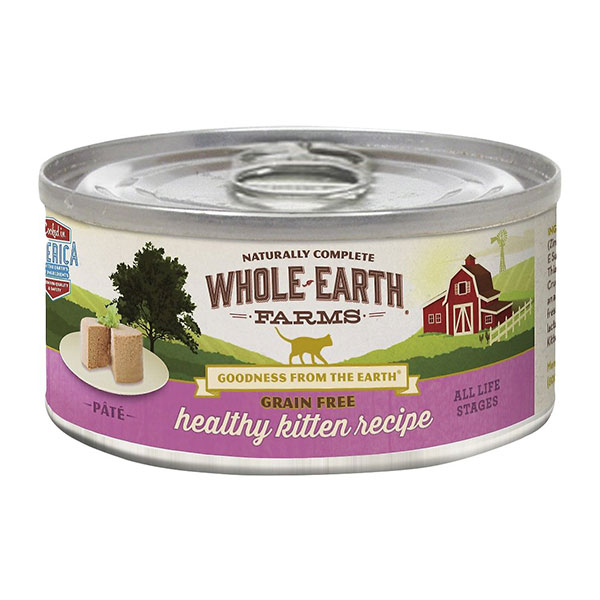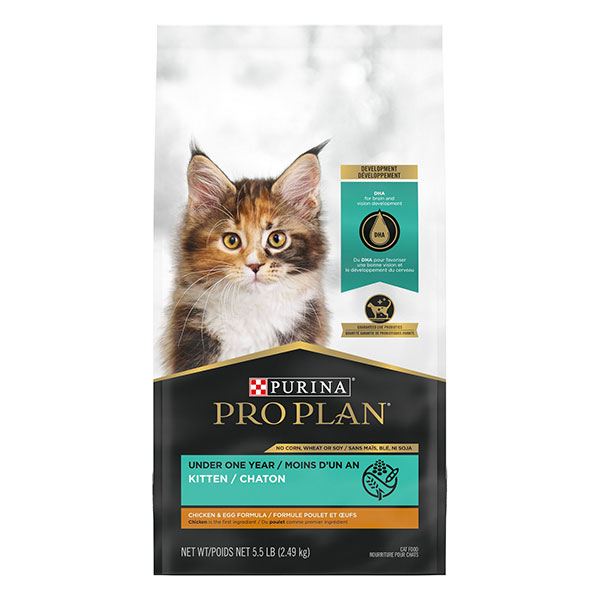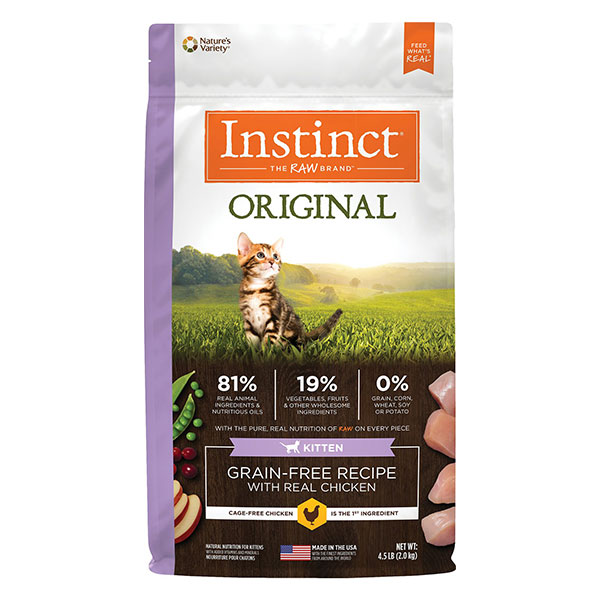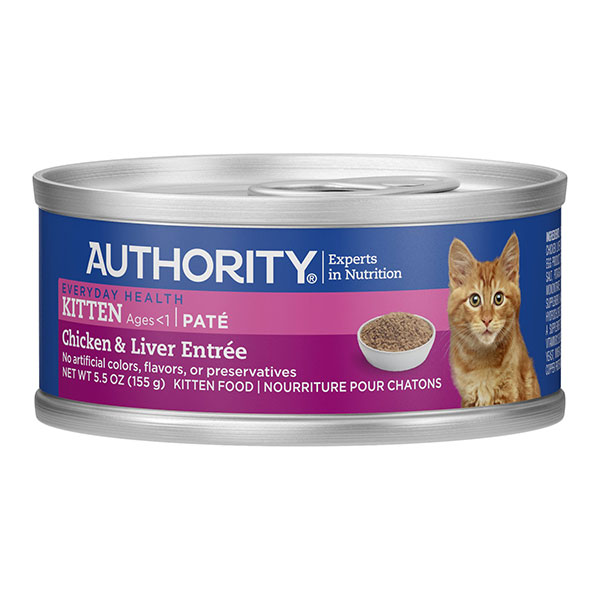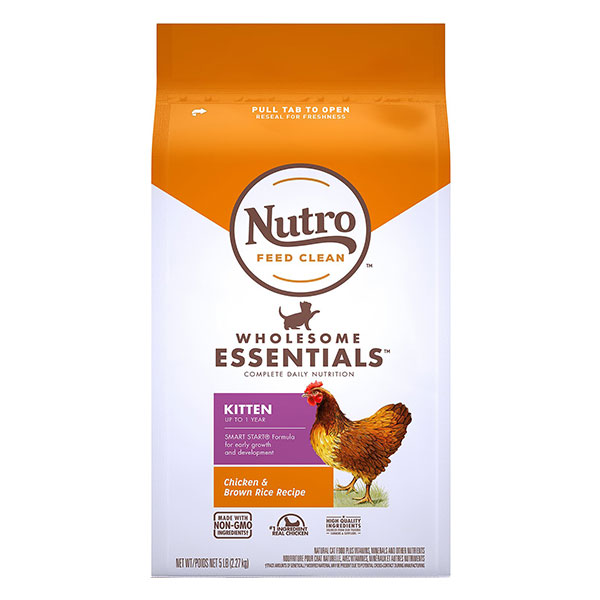
Best Kitten Food
Diet plays a continuous role in your cat’s health, but it’s never more important than during kittenhood.
While they may be tiny, kittens are more fuel-hungry than a pickup truck, converting energy into new cells and tissues at top speed.
This results in calorie and nutritional requirements that, relatively speaking, far exceed any other feline life stage. Most kittens will double their size within the first few weeks of life.
By the time they’re ready for weaning at around ten weeks, they’ll have grown from a few fluffy ounces to nearly two pounds—and they’ll continue to spend most of their energy forming a strong body until the age of one.
All that growing needs calorific, well-sourced protein, fats, and minerals, and getting that mix wrong can have lifelong consequences for your moggie. Deprive a kitten of essential nutrients, or provide them with inappropriate food group ratios, and their skeletal development and density can be compromised. A lack of vitamin and mineral balance in kittenhood will often result in developmental and joint problems later down the road.
Kittens should be nursed exclusively by their mother until they’re around seven weeks old. From that point, food can be introduced, and kittens over ten weeks should use kitten food as their sole nutritional source. Once they reach a year, it’s time to begin the transition to all life stage food.
How we determine the best kitten foods
While there are literally hundreds of kitten food options on the shelves, the market can be quickly narrowed down by focusing on what is, and isn’t, beneficial for kitten health. As a basic rule, a kitten’s diet should:
- Support them in achieving a healthy growth rate: their growth should neither be stunted nor maximized.
- Allow them to develop a fully functioning immune system: their diet needs to contain all relevant vitamins and minerals, and
- Minimize the potential for obesity or excessive weight gain: their intake of fats should be managaed fats and carbohydrates minimized.
We used several metrics to reflect these needs and create our list of the best kitten foods available. These include calorie count, quality of protein and fat sources, the concentration of amino acids, vitamins, and minerals, protein-to-carbohydrate ratio, and moisture content. Here’s what we found:
What do kittens need to eat?
The Best Kitten Foods of 2020

Best Wet Food
Wellness Complete Health Kitten Formula
Any kitten food that lists whole, majority animal foods in their first five ingredients automatically captures our interest.
Key Benefits
Wet food
11% protein
6% fat
First 5 ingredients:
Chicken, Chicken Liver, Chicken Broth, Carrots, Natural Flavor
Nutritional Profile
This grain-free formula from Wellness Complete not only features an impressive list of primary ingredients but combines that with impressive customer ratings and value for money, making this product our top pick for Best Wet Kitten food.
Using real chicken and chicken liver as its two primary ingredients, the Wellness Complete formula ensures a healthy 2:1 protein to fat ratio, with the only major non-animal ingredient being carrots, which are low in sugars and high in fiber. Other notable ingredients include flaxseed and fish oil, which both contain Omega fatty acids. Completely the picture are antioxidants, taurine, and artificial vitamins and minerals.
What are the owners saying:
“I opened a can of this and she went nuts for it, licked the bowl clean, which she had never done before (I helped foster her before I adopted.)”
“My kitten has had digestive issues for the past month I’ve had her. The past few days I’ve been feeding her half-and-half of this food and prescriptive food. This food doesn’t irritate her stomach or cause any diarrhea, which is such a miracle.”
Also Consider for Wet Food
Nulo Freestyle Minced Turkey & Duck in Gravy Kitten Food
Similar to the Wellness Complete formula, Nulo freestyle combines animal meat, liver, and broths to make up the main component of the recipe.
Key Benefits
Wet food
10% protein
3.5% fat
First 5 ingredients:
Turkey, Turkey Broth, Duck Broth, Turkey Liver, Dried Egg Whites
Nutritional Profile
With zero grain, carrageenan, corn, wheat, soy, or meat meals, this is definitely one to consider if your kitten has an aversion or allergy to chicken. On the downside, Nulo doesn’t currently post the AAFCO nutrient profile of their products on their site, though they say they’re working ‘tirelessly’ to do this as soon as possible.
Also Consider for Wet Food
Earthborn Holistic Monterey Medley Kitten Food
This fish formula from Earthborn has an extremely high protein to fat ratio, and thanks to the variety of fish used in the recipe, is loaded with omega-3 and 6 fatty acids.
Key Benefits
Wet food
12% protein
2% fat
4.7 (329 ratings)
First 5 ingredients:
Fish Broth, Skipjack Tuna, Mackerel, Potatoes, Sunflower Oil
Nutritional Profile
Like the other kitten foods in our ‘best’ category, Earthborn makes sure that each of the top five ingredients offers nutritional benefit, although the fact that a broth rather than whole meat is this food’s primary ingredient is a little disappointing.
Earthborn guarantees sufficient levels of vitamins and minerals such as taurine in their recipes, to help support kittens’ still-developing immune systems.
What the owners are saying?
“I have a cat with IBD and pancreatitis, and finding the right food for him is tricky. For a month he was on raw food until he started to vomit that as well. I discovered recently on the advice of a vet that some cats can’t tolerate pate food…so I found this food, with little flakes and chunks in gravy. And it turns out all of my 6 rescues love it.”
“My stray momma cat I’ve been taking care of loves this wet food above all other brands I’ve tried- it’s got a thick gravy sauce all over which she sucks up like a vacuum.”
Best Dry Food
Halo Holistic Wild Salmon & Whitefish Recipe Grain-Free Kitten Dry Cat Food
Kittens need a diet that’s rich in moisture, which means that dry food should never be their sole source of nutrition.
Key Benefits
Dry food
33% protein
19% fat
Nutritional Profile
For those that do eat some amount of kibble, Halo’s Wild Salmon and Whitefish Recipe is about a good as it gets—with quality ingredients, a good mix of protein and fat, and plentiful omega oils.
The thing we like most about Halo Holistic dried foods is that they only contain meat from sustainable fish, and no rendered meat meal, which is a rarity in the world of dry foods. Halo makes up their formulas within the US and has a commitment to never engage with factory farms.
What the owners are saying?
“My 6-month-old kitten was eating Blue Buffalo’s kitten kibble, chicken flavor, prior to Halo. Her poops were on the soft side, and smelled HORRENDOUS! I bought some Halo, and other food to try. After one week of feeding her Halo (gradually of course), I no longer had to fight back the tears from the poop stench!”
“Tried for a few days, adding a little water to it to make a gravy and nope… tried mixing w/some wet food & she’d eat the wet food off the dry & leave the remaining dry behind.”
Also Consider for dry food
Nulo Freestyle Chicken & Cod Recipe Grain-Free Dry Cat & Kitten Food
Another grain-free dry food worth considering is Nulo’s chicken and cod recipe.
Key Benefits
Dry food
40% protein
20% fat
4.3 (150 ratings)
First 5 ingredients:
Deboned Chicken, Chicken Meal, Turkey Meal, Deboned Cod, Whole Peas
Nutritional Profile
In addition to an all-meat line up across the first four ingredients (which gives an overall animal protein of 83%), we like the attention that Nulo pays to the shape of their kibble pieces. Each piece is manufactured in a small disc shape with a softer texture, making it easier for kittens to bite and chew.
What the owners are saying?
“I love this food because the pieces are tiny! My girl doesn’t chew so she was swallowing large pieces of other brands whole.”
“I wanted to love it but when I gave my kitty, Einstein, the choice between this and Dr. Elsey’s dry food, he would only eat Dr. Elseys.”
Also Consider for dry food
Merrick Purrfect Bistro Grain-Free Healthy Kitten Recipe Dry Cat Food
A third great option for dry kitten food: Merrick Purrfect Bistro grain-free Healthy Kitten recipe.
Key Benefits
Dry food
41% protein
17% fat
4.6 (141 ratings)
First 5 ingredients:
Deboned Chicken, Chicken Meal, Turkey Meal, Dried Potato, Peas
Nutritional Profile
This US-made formula is high in both protein and fats, and while it does use a significant amount of meat meal, we think the quality of other ingredients and brand reputation is sufficient insurance against the presence of unwanted by-products.
The vast majority of reviews for this formula are very positive. That said, a small number of owners questioned its palatability, with their cats seeming to quickly tire of the flavor.
What the owners are saying?
“My adoptive kitty has been eating this for a year and a half now, and she loves it.”
“I’ve been using Merrick small breed for my chihuahuas for approximately 6 years. When I adopted my ragdoll kitten I bought Merrick wet and dry kitten. Initially, I purchased the smaller cans and she seemed to like them just fine. Once I bought the larger cans she refused to eat it.”
“My two kittens just smelled the kibble and walked away. Not even a taste test.”
Best kitten food for sensitive stomachs (dry)
Taste of the Wild PREY Turkey Formula Limited Ingredient Recipe Dry Cat Food
Finding the right diet for a kitten with a sensitive stomach can be a difficult business, especially when the wrong choice results in a cycle of digestive upset.
Key Benefits
Dry food
33% protein
15% fat
4.6 (16 ratings)
First 5 ingredients:
Turkey, Lentils, Sunflower Oil, Natural Flavor, Salmon Oil (Source Of Dha), Dl-Methionine
Nutritional Profile
While no two sensitive stomachs are the same, we think that this limited-ingredient formula from Taste of the Wild is a good option for most.
Using milder turkey and lentils instead of chicken and more common carbs, this recipe contains zero meal, heavy protein, or grain. Instead, just three key ingredients make up the majority of the formula, complimented by a range of fatty oils to encourage swift digestion
What the owners are saying?
“WOW!! That’s all I can say about this. Both my cats, including my one that has chicken and other ingredient sensitivities, took to this immediately!! This is the first time that my cats have loved dry cat food within a half-hour.”
“I have one cat that has had severe stomach issues with chicken. This is the only product I could find that did not have any chicken meal or chicken by-products in it.”
Best kitten food for sensitive stomachs (wet)
With its first 6 ingredients being animal-based, Wellness Core Natural stands out as one of the most meat-rich recipes on this list.
Key features:
- First 6 ingredients meat based
- High protein, high fat
- Grain free
- No carrageenan, artificial colors, flavors, or meat byproducts
First 5 ingredients:
- Turkey
- Chicken Liver
- Turkey Broth
- Chicken
- Chicken Meal
Nutritional Profile
What the owners are saying?
“This food is a noticeable step up: my kittens devour their food, it smells delicious, and their coats are silky soft.”
“I think he really likes how soft and juicy it is. Unfortunately, it is not in my budget to continue feeding.”
Nutritional info:
- Crude protein (min): 12.0%
- Crude fat (min): 7.5%
- Crude fiber (max): 1.0%
- Moisture (max): 78.0%
Best food for weaning kittens
Royal Canin Mother & Babycat Ultra-Soft Mousse in Sauce Wet Cat Food for New Kittens and Nursing or Pregnant Mother Cats
Royal Canin has designed this mousse to be suitable for both mothers and their kittens, helping manage costs when there’s suddenly a whole bunch more mouths to feed.
Key Benefits
Wet food
9% protein
4% fat
- 4.7 (300 ratings)
- First 5 ingredients:
Water Sufficient For Processing, Chicken Liver, Chicken, Chicken By-Products, Pork By-Products
Nutritional Profile
Its recipe is actually a hit with cats of all life stages, with an immune-boosting selection of ingredients and a texture that works well for the oldest and youngest moggies.
What the owners are saying?
“I have four cats…originally purchased this food for our young kitten who seemed to enjoy it very much. Now…we find that our elderly arthritic lady cat is eating this food almost exclusively.”
“My husband found a sweet, starving cat in the mountains in western NC while caring for his elderly grandfather…We took her to the vet who confirmed she was pregnant…From the time we got the confirmation she was pregnant, we switched her to this food to try to get weight on her faster and give more nutrition to the developing kittens. She loved this food.”
Best kitten food for constipation
Whole Earth Farms Grain-Free Real Healthy Kitten Recipe Canned Cat Food
Kittens aren’t immune to everyday feline complaints such as constipation, and when slow digestion does strike, it’s important for owners to counteract the issue with lots of fiber.
Key Benefits
Wet food
9% protein
4% fat
- 4.5 (104 ratings)
- First 5 ingredients:
Chicken, Chicken Broth, Chicken Liver, Natural Flavor, Dried Egg Product
Nutritional Profile
This formula from Whole Earth Farms helps boost your kitten’s fiber intake without resorting to grain products, making it a winner with those owners who are exacting about what their cat does and doesn’t eat.
What the owners are saying?
“it takes hours to research a perfect food to serve and 98% have something that it lacks or has too much of…Overall with my hours of hunting, this fits my request as a quality wet food for my kittens and cats.”
“I feed my 5 months, 5 lb kitten close to 300 calories a day in the wet and dry food. He drinks plenty of water so feeding him solely wet food isn’t an issue for me.”
Best kitten food for weight gain
Purina Pro Plan Kitten Chicken & Egg Formula Grain-Free Kitten Food
Kittens that need to be fed up (something that should happen under the guidance of a veterinary professional) require good quality calories, and not just an excess of any type of food.
Key Benefits
Dry food
42% protein
19% fat
4.7 (62 ratings)
First 5 ingredients:
Chicken, Pea Protein, Chicken Meal, Cassava Root Flour, Dried Egg Product
Nutritional Profile
While Purina Pro’s kitten formula definitely has a super high-calorie count, it’s also rich in minerals and fiber, including calcium and phosphorus to support bone strength, as well as real chicken as the first ingredient.
What the owners are saying?
“I have tried a few different brands and my two new kittens will not eat it. they love this one and are eating like little piggies.”
“It seemed to be the only kitten formula that has the most nutritious ingredients.”
Best raw kitten food
Instinct Original Kitten Grain-Free Recipe with Real Chicken Freeze-Dried Raw Coated Dry Cat Food
Here’s a convenient middle ground between a raw diet and traditional processed foods: Instinct Original’s Freeze-Dried Raw Coated Dry Cat Food.
Key Benefits
- Freeze-dried Raw
42.5% protein
22.5% fat
- 4.4 (117 ratings)
- First 5 ingredients:
Chicken, Turkey Meal, Menhaden Fish Meal, Peas, Chicken Fat
Nutritional Profile
This highly-rated formula mixes 81% animal meats and oils with 19% vegetables and other fiber sources, but it’s stand out features are its fast preservation process, which retains the nutrient profile of raw food, and the fact that Instinct Originals are committed to only using cage-free chicken.
What the owners are saying?
“I went from science hill to this brand. He took to it on the second day of mixed food. I feed my cat a nutrient supplement but I think this food would be good on its own.”
“I’ve tried a few dry kitten foods for my new kitten and this is the one I will stick with for her last few months of kittenhood.”
Best budget food (wet)
Authority Chicken & Liver Entree Kitten Pate Canned Cat Food
The majority of pet owners are looking for the optimal trade off between quality ingredients versus value for money, and Authority’s Chicken & Liver Entrée may well hit that balance perfectly.
Key Benefits
Wet food
11% protein
7% fat
3.6 (41 ratings)
First 5 ingredients:
Chicken Broth, Chicken, Turkey, Chicken Liver, Ocean Fish
Nutritional Profile
While it’s one of our cheapest recommended formulas, its ingredients remain absolutely sufficient for your kitten’s long term health, with meat products taking up the first five entries in the recipe, and zero artificial colors, flavors, or preservatives.
One thing to note here about the Authority Entrée formula is that a small number of cats who were normally happy with this brand seemed to completely dismiss certain batches of the product, raising possible questions about product consistency, especially when compared to the more luxurious brands on this list.
What the owners are saying?
“I started with the Wellness brand, but the cost became too much. The only difference in ingredients that I can tell is that this doesn’t have veggies whereas Wellness does.”
“My older cat and my kitten had been eating this food up until a month ago with this batch that I bought. They won’t touch it!”
Best budget food (dry)
Nutro Wholesome Essentials Chicken & Brown Rice Recipe Kitten Dry Cat Food
Another example of a formula that balances low cost with good ingredients is Nutro Wholesome’s Essential range.
Key Benefits
Dry food
36% protein
19% fat
- 4.7 (113 ratings)
First 5 ingredients:
Chicken, Chicken Meal, Pea Protein, Chicken Fat (preserved with Mixed Tocopherols), Brewers Rice
Nutritional Profile
Unlike the Authority, this recipe manages to retain real chicken as the primary ingredient, however, it also contains a fair amount of meat meal to top up the protein content. Added calcium should help promote healthy, consistent growth as your kitten increases in size.
What the owners are saying?
“This is my ‘go-to’ kitten food once my foster kittens are done nursing on their Mama. The kibble is small enough so they can eat it without any problems and I love that there is no corn, soy, or wheat to cause any digestive problems.”
“Our picky kitten loves this food! We have tried to see if he’ll eat another brand that was more expensive but he hates the new one so we will be ordering more of this.”
Additional Information
Essential Nutrients
FAQ
Ultimately, the most important thing to remember is that kittens need specially formulated kitten food. After that, deciding whether you want to feed them canned, wet food or dry food is up to you, your vet and your kitten (they can be quite finicky!).
But it’s good for very young kittens to have at least some wet food in their diet. Because of their small teeth, they may not be able to chew dry food as well. Adult teeth start to make an appearance around 3 – 4 months. So at the beginning, wet, canned food may be your only option. However, introducing a mixture of wet and dry food is a good idea as they both offer benefits to your precious fur baby.
Benefits of wet food:
- Maintains hydrations and sufficient water intake
- Smells better and is easier to eat due to its soft texture
- Convenient and fresh to serve
- Good for kidney health and preventing urinary tract infections
- High protein/low carbs to support your growing kitten
Benefits of dry food:
- Cheaper and can store longer
- Easy to measure and serve
- Good for your kitten’s dental health and removing plaque
Dry food isn’t inherently bad for kittens, it’s just best if you incorporate wet food in their diet in addition to dry food. Dry kibble is more likely to contain more carbs, less meat and less moisture so it can contribute to dehydration, urinary tract issues and more. If they just eat dry food, then they’re more likely to not drink enough water.
Given that a can of wet food contains around 70 – 80% of water – it’s completely fresh, moisture-rich and nutritionally sound with the essential ingredients your baby needs. This is necessary to keep your kitty hydrated and healthy. That’s why the wet and dry food combination offers the best of both worlds!
Kittens are growing fur babies; their weight often doubles or triples just in the first several weeks! In addition, their energy is off the charts. For these reasons, kittens require different nutritional elements compared to adults. Kittens need more calories, protein, amino acids, calcium and healthy fat.
Being able to discern whether you have the right food for your kitten is first looking at quality. You should be purchasing from reputable companies that are also recommended by your veterinarian. When it has a “Complete and Balanced” label as set out by the American Association of Feed Control Officials (AAFCO) – then it’s in the clear.
After doing a quality analysis, you should evaluate how your kitten is looking, behaving and reacting to the food. Do they seem playful and alert? Have they been steadily gaining weight? Does their coat look clean and healthy? These are all questions you should be asking to determine if you’re feeding the right food.
Would you feed a newborn, human baby food that you would eat as an adult? Hopefully not! Because babies require different nutrients and textures compared to adults. The same goes for kittens. Now – you’re kitten won’t be harmed if they have the occasional adult cat food.
However, it’s important to feed them food formulated for kittens until they reach 1 year of age. For their tiny stature, kittens need tons of energy (around two to three times more than an adult cat). Purchasing food that is explicitly labeled as ‘Kitten Food” will benefit your little one at this life stage.
Because of their high, exuberant energy, kittens need to be fed more than an adult cat would. Always check with your vet to confirm the right portion size and how often you should feed him or her. But for most kittens around 3 – 6 months old, it’s recommended to feed them around three times per day: morning, afternoon and evening.
The benefit of dry food is that it can be left out for longer periods without compromising safety. If you do choose to leave dry food out, just keep portions controlled to avoid overeating and weight gain. On the other hand, canned wet food shouldn’t be left out longer than 20 – 30 minutes to avoid contamination. Store any remaining wet food in the fridge for up to 5 days, sealed and covered in the can.

